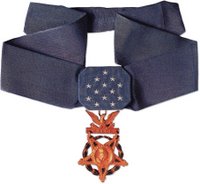Lieutenant, 44th Regiment
Born: 4 September 1834, Dublin, Ireland
Died: 5 February 1895, Maidenhead, Berkshire
JOHN LEISHMAN M'DOUGALL
Private, 44th Regiment
Born: 1839, Edinburgh
Died: 10 March 1869, Edinburgh
EDMUND HENRY LENON
Lieutenant, 67th Regiment
Born: 25 August 1833, Mortlake, Surrey
Died: 15 April 1893, Lambeth, South London
 Joint Citation: THE Queen has been graciously pleased to signify Her intention to confer the decoration of the Victoria Cross on the under-mentioned Officers and Soldiers, whose claims to the same have been submitted for Her Majesty's approval, on account of Acts of Bravery performed by them in China, on the occasion of the assault and capture of the North Taku Fort on the 21st of August, 1860, as recorded against their several names; viz.:
Joint Citation: THE Queen has been graciously pleased to signify Her intention to confer the decoration of the Victoria Cross on the under-mentioned Officers and Soldiers, whose claims to the same have been submitted for Her Majesty's approval, on account of Acts of Bravery performed by them in China, on the occasion of the assault and capture of the North Taku Fort on the 21st of August, 1860, as recorded against their several names; viz.:For distinguished gallantry in swimming the Ditches, and entering the North Taku Fort by an embrasure during the assault. They were the first of the English .established on the walls of the Fort, which they entered in the order in which their names are here recorded, each one being assisted by the others to mount the embrasure.
[London Gazette issue 22538 dated 13 Aug 1861, published 13 Aug 1861.]
Note: The Taku Forts are located by the Hai (Pei Ho) River estuary, in Tanggu District, 60 km southeast of Tianjin (Tientsin). The action described here took place during the Second Opium War (1856-60).
















